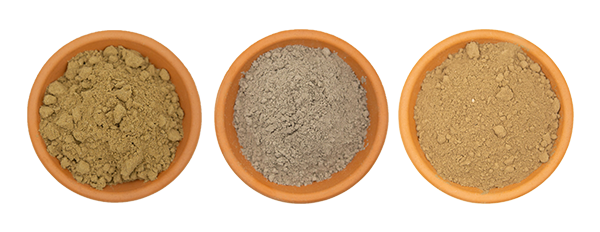EC for Hydroponics: Understanding Electrical Conductivity
By Hydro Experts | 28 September 2021
.jpg)
EC stands for Electrical Conductivity and PPM stands for Parts Per Million. Both terms are used to determine the nutrient levels of water within your hydroponic system. Whether you're new to hydroponics or have been growing hydroponically for years, it's important to keep up with your nutrient levels and understand what they mean.
This article will go over EC and PPM and their importance when growing hydroponically, as well as how to measure each value and what each value means for your grow system and plants.
What is EC (Electrical Conductivity)?
EC measures how well your nutrient solution is conducting electricity. Measuring EC can help you determine how much nutrients are being absorbed by your plants.
If you prefer not to purchase a conductivity meter, EC can also be measured using TDS (Total Dissolved Solids) meters, which count salts instead of electrical conductivity. For hydroponics systems, it's easier and more accurate to stick with EC measurements since TDS meters don't account for mineral content in fertilizer salts or natural minerals in water sources.
We recommend keeping your EC within optimal ranges at all times—if your solution is too high or low, roots will be under-or over-fed respectively. Consult our recommended EC chart for hydroponic systems if you're not sure where yours stands!
Too little nutrients mean less growth; too many means more runoff into drains—both situations are counterproductive.
How Do I Measure EC?
Electronic conductivity meters, or EC meters as they’re commonly called, are a great tool to have when working with hydroponic nutrients. They allow you to accurately measure your water's conductivity, aka EC level.
In order to measure EC you need a conductivity meter and hydroponic nutrient solution. There are a few different types of conductivity meters out there so it is important that you choose one that will work best for your hydroponic system.
The most common types include:
1) Digital Meter – This type of meter offers a wide range of measurement options and even allows you to calibrate it according to your own standards if needed. It is typically used by people with multiple hydroponic systems since they are portable enough to take from one setup to another.
2) Lab-Style EC/PPM Meters – Typically more expensive than digital meters, lab-style meters are meant for use with one system at a time. They are larger but allow much more accurate readings than digital ones, generally by about half an EC point, which can make all the difference when working with nutrients.
3) Sticky Meters - Although not as precise as lab-style meters, sticky meters offer convenience that cannot be matched by other types; they stick right onto your hydroponic setup’s reservoir or growing medium.
What Affects My Nutrient Solution's EC Level?
There are several factors that affect your hydroponic solution's EC level. Electrical conductivity is commonly referred to as EC or PPM. The electrical conductivity of your nutrient solution tells you how many electrical charges are being passed through a litre of solution in a given amount of time.
Conductivity is measured in milliSiemens per centimetre (mS/cm). High conductivity indicates that many charges are being passed through, whereas low conductivity indicates fewer charges are being passed through. If your solution is low in PPM, it may mean that you need to add more fertilizer. Conversely, if your PPM level is high, you may need to flush out excess salts with plain water before adding more nutrients.
Electrical conductivity levels fluctuate throughout a plant's life cycle; EC increases when new growth appears and decreases when growth ceases. The amount of water lost by transpiration also plays a role in determining an EC level. Excess salt buildup can cause EC levels to fluctuate wildly, which makes it difficult to figure out whether your plants are actually getting more fertilizer over time.
To avoid problems related to high salt buildup, be sure to flush your solution regularly using plain water. If you live in an area with hard water, you may need to use distilled or RO (reverse osmosis) water during flushing cycles, because tap or well water typically has more minerals than distilled or RO.
Some fertilizers contain chemicals that affect EC measurements, so it is important that you use a fertilizer designed specifically for hydroponic systems if possible.
are EC and Ph the same?
While both EC and PH can be used to measure nutrient concentration, they are actually completely different. EC is a measure of electrical conductivity while PH is a measure of hydrogen ions.
The two can be interchanged because one solution's conductivity will usually always match up with another solution's pH level, but it doesn't necessarily mean that one is better than another. It just means that you're checking for nutrients at different levels in your hydroponic setup.
When choosing an EC or Ph tester make sure you know which tool you need before buying! You also want to make sure that whichever one you choose has accurate measurements so you don't accidentally over-fertilize your plants if using an EC tester or under-fertilize if using a ph tester.
Does pH affect EC?
even though pH doesn’t always affect nutrient absorption, it does play a role in nutrient solubility. If your nutrient solution is highly basic (and therefore less acidic), then certain nutrients may not dissolve as well. This means that EC may be higher—or lower, depending on how you look at it—than expected.
The simple fix?
Monitor your EC and adjust as needed by adjusting pH accordingly. The good news is that only a small change to EC will produce noticeable changes to pH; if you notice something isn’t right, don’t overreact! In most cases, keeping an eye on both PPM and EC can prevent problems from ever cropping up.







